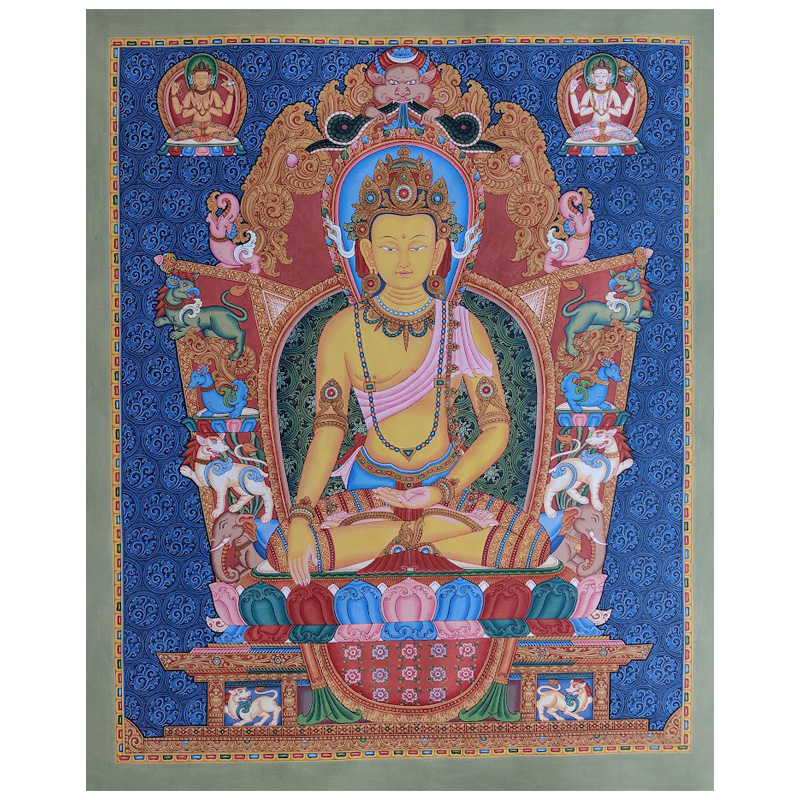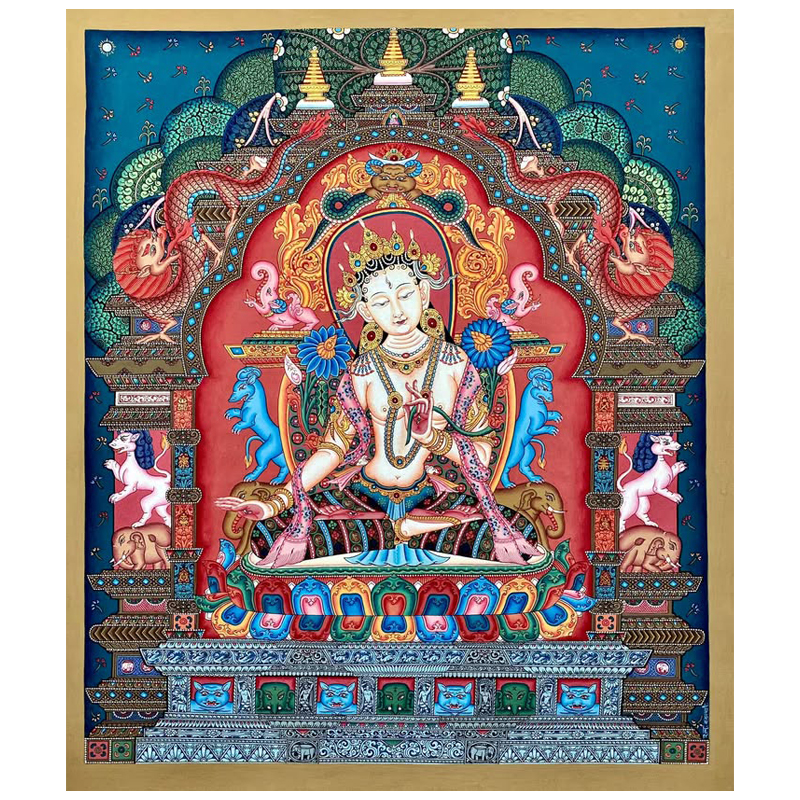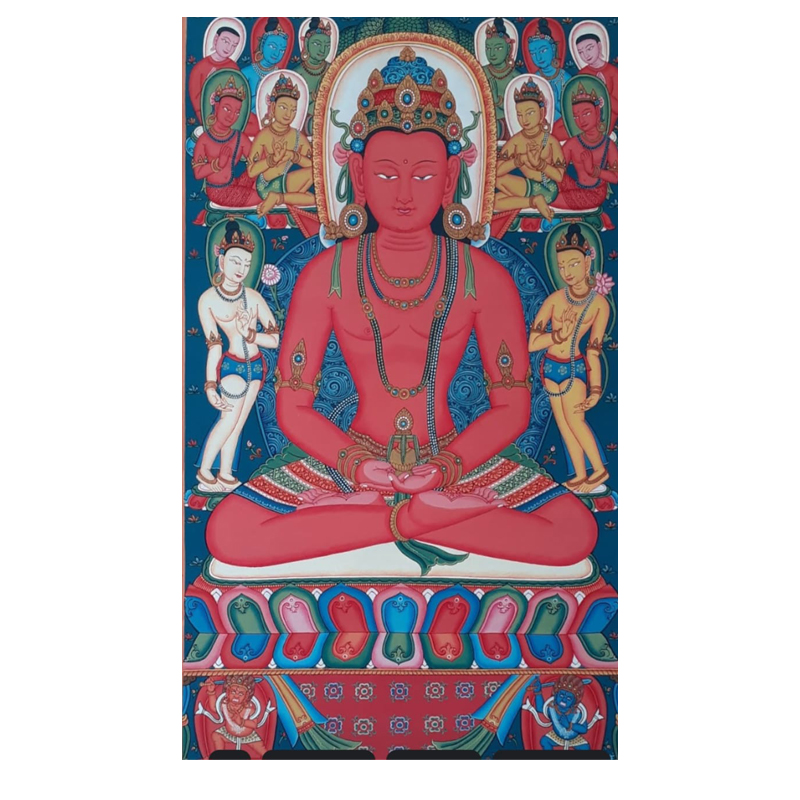

This Paubha painting depicts a Crowned Buddha, a revered representation in Buddhist iconography. The Crowned Buddha symbolizes the Buddha's enlightened nature, adorned with royal attributes to signify his spiritual sovereignty. Here is a revised explanation based on Crowned Buddha iconography:
Central Figure – The Crowned Buddha:
The central figure is the Buddha in a regal form, seated serenely on a lotus pedestal. Unlike the usual depiction of the Buddha in simple robes, this form presents the Buddha adorned with a resplendent crown, intricate jewelry, and ceremonial garments. This symbolizes his transcendence of worldly life while embracing spiritual kingship.Gesture (Mudra):
The hand gestures of the Crowned Buddha hold specific meanings. In this painting, the Buddha is seen with a specific mudra, possibly the Dharmachakra Mudra (teaching the Dharma) or Dhyana Mudra (meditation), symbolizing his role as the teacher of universal truth and wisdom.Ornamental Features:
The elaborate crown, necklaces, and armlets signify the Buddha’s enlightenment and his role as the “spiritual monarch.” These ornaments also represent the transformation of mundane desires into the jewels of wisdom and compassion.Background and Torana:
The Buddha is seated against a richly decorated Torana (archway), which features mythological creatures, auspicious symbols, and intricate floral designs. These elements emphasize divine protection, cosmic harmony, and the sacredness of the Buddha's teachings.Symbolism of the Lotus Throne:
The Buddha is depicted seated on a multicolored lotus throne, which represents purity and detachment. The lotus grows in muddy waters yet blooms immaculately, symbolizing the Buddha's rise above worldly attachments to achieve enlightenment.Cultural and Spiritual Significance:
The Crowned Buddha represents the inseparability of Samsara (worldly existence) and Nirvana (liberation). This iconography reflects the idea that enlightenment transcends material existence without rejecting it.

